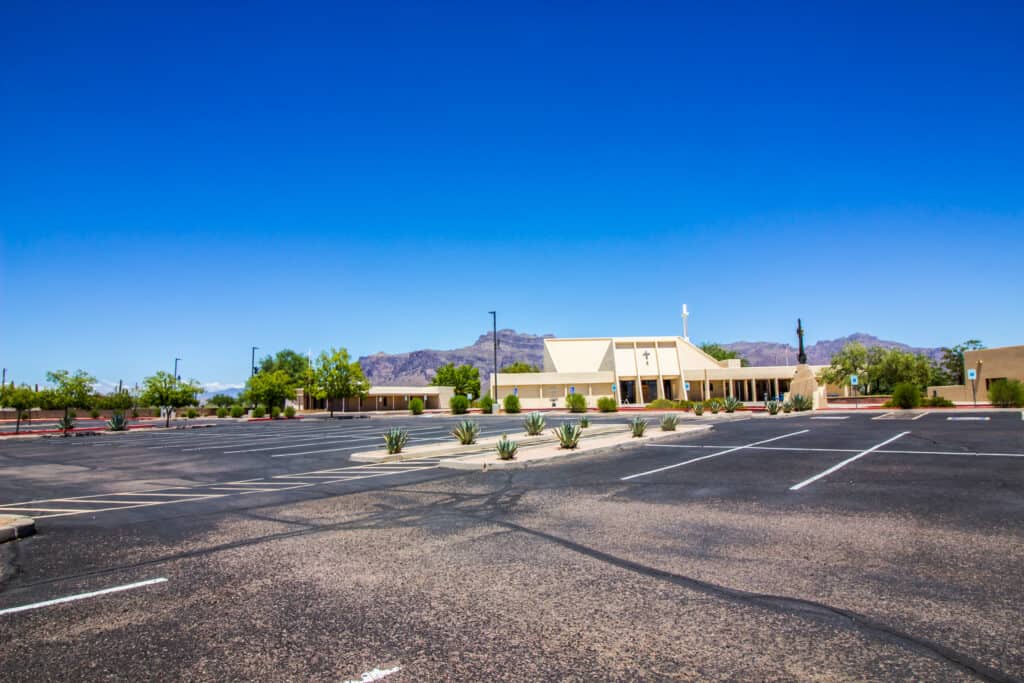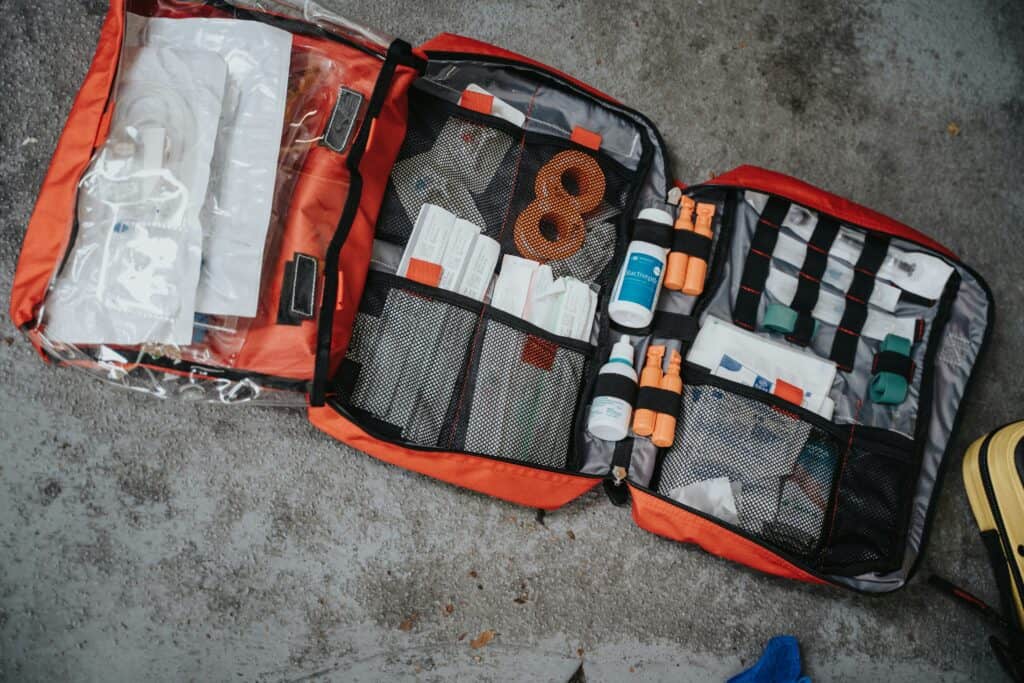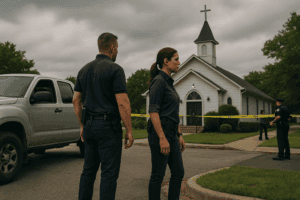Church security is a crucial aspect of maintaining a safe environment for worshipers and visitors alike. One critical element in the planning process is establishing the outer perimeter, which refers to the boundary at the outermost edge of the property. The most important aspect of defining this outer perimeter is to consider its size, existing protection features such as barriers, fencing, gates, and lighting, as well as any observed risks.
The outer perimeter is often the first opportunity to address vulnerabilities and mitigate potential attacks. Every house of worship (HoW) presents its unique challenges and circumstances. Some may have large fields for sporting events or outdoor activities, while others may include surface parking lots with varying degrees of security features. Street parking and unaffiliated multi-story parking facilities may also fall within the outer perimeter of some HoWs.
Once the Security Planning Team has defined the outer perimeter, it can identify vulnerabilities, determine possible mitigation solutions, and prioritize them based on probability, impact, and cost. Houses of worship, especially those planning new construction or renovations, may find useful insights in the concept of Crime Prevention Through Environmental Design (CPTED), which focuses on how the built environment can shape human behavior. By implementing subtle and cost-effective solutions, such as changes to landscaping or utilizing strategic design principles from resources like FEMA’s guidance on site and building design, HoWs can enhance their security and better protect their communities.
Defining the Outer Perimeter
Size and Boundaries
Defining the outer perimeter of your House of Worship (HoW) is crucial in the planning process. It involves establishing the total area of responsibility, which lies at the boundary of your property’s outermost edge. Each HoW may have a distinct outer perimeter, and it is essential to define it concerning size and observed risks. This area may include large fields for sports events or outdoor activities, surface parking lots with or without fencing, lighting, monitoring, or street parking. Once established, the Security Planning Team can identify vulnerabilities, determine possible mitigation solutions, and prioritize them based on probability, impact, and cost.
Existing Protection Features
The outer perimeter’s protection features are vital in mitigating potential attacks. Common protection features include barriers, fencing, gates, and lighting. By analyzing the fencing and other existing defenses, it is possible to enhance perimeter security, thus reducing the risk and damage of potential threats.
Houses of Worship that are planning for new construction or renovations can look into the concept of Crime Prevention Through Environmental Design (CPTED) to gain useful insights. CPTED focuses on how the built environment can shape human behavior and provides cost-effective, subtle solutions for improving security. Examples include changes in landscaping to enhance visibility and deter criminal activities.
When defining the outer perimeter, always use a confident, knowledgeable, neutral, and clear tone. By understanding your HoW’s specific needs and characteristics, you can develop a robust security plan to keep worshippers and visitors safe.
Assessing Vulnerabilities
When it comes to church security, assessing vulnerabilities in the outer perimeter is crucial for creating a safe environment. This section will discuss observed risks and potential threats, providing insight on how to address them.
Observed Risks
Observing and identifying risks in the outer perimeter is the first step toward enhancing security. Houses of worship (HoWs) should consider evaluating existing protective features like barriers, fencing, gates, and lighting to ascertain their effectiveness. In addition, scrutinizing the layout and design of parking lots, sports fields, and other outdoor areas can help uncover vulnerabilities. For a comprehensive understanding of security vulnerabilities, the Security Planning Team can consult resources such as FEMA’s Site and Urban Design for Security: Guidance Against Potential Terrorist Attacks.
Potential Threats
Being aware of potential threats is crucial in improving church security. HoWs should consider the risk of break-ins, vandalism, or even potential terrorist attacks. By understanding these threats, the Security Planning Team can formulate strategies and prioritize solutions based on probability, impact, and cost.
One strategy that can be employed is Crime Prevention Through Environmental Design (CPTED), which focuses on how the built environment can shape human behavior. This approach can lead to subtle and cost-effective adjustments to landscaping, lighting, and other security features that make the outer perimeter less accessible or attractive to potential attackers.
In summary, assessing vulnerabilities in the outer perimeter of a church is an important aspect of ensuring the safety and security of the congregation. Identifying observed risks and understanding potential threats will ultimately help in developing effective solutions that enhance the overall security of the house of worship.
Mitigation and Solutions
Prioritization Based on Probability, Impact, and Cost
Establishing the outer perimeter is essential for identifying potential vulnerabilities and creating a plan to address them. Once the Security Planning Team has defined the outer perimeter, it should prioritize solutions by considering their probability, impact, and cost. This approach ensures that resources are allocated effectively, addressing the most significant threats and risks first. Some factors to consider when prioritizing solutions might include the likelihood of incidents, the potential impact on the house of worship’s community and property, and the financial resources available for implementing security measures.
Crime Prevention Through Environmental Design (CPTED)
Crime Prevention Through Environmental Design (CPTED) is a concept that focuses on how the built environment can shape human behavior and deter potential threats. Houses of worship, particularly those contemplating new construction or renovations, may find useful insights in the CPTED approach. Implementing CPTED principles can lead to cost-effective solutions that enhance overall security.
For instance, subtle changes in landscaping can improve visibility around the property and discourage potential intruders from accessing restricted areas. Furthermore, lighting plays a crucial role in enhancing security. Well-illuminated spaces can deter criminal activities and enhance surveillance capabilities, ensuring that potential risks are identified early.
In conclusion, to effectively mitigate potential security risks in houses of worship, it’s essential to establish a clear outer perimeter, prioritize solutions based on probability, impact, and cost, and consider implementing CPTED principles to create a safer environment. This comprehensive approach will help create a more secure space for worshippers and protect the house of worship’s assets.
Securing Parking Areas

Surface Parking Lots
Surface parking lots are common in houses of worship and often serve as part of the outer perimeter. To secure these areas, it is crucial to incorporate appropriate security measures, such as fencing and lighting. Installing fences can restrict unauthorized access, while sufficient lighting can enhance the visibility of the surroundings and potentially deter intruders. Additionally, consider incorporating surveillance systems and regular security patrols to monitor any suspicious activity.
Landscaping can also play a significant role in securing surface parking lots. Placing natural barriers, such as trees or bushes, can act as both a visual and physical deterrent for unauthorized individuals. However, it is essential to maintain a clear line of sight and trim vegetation to prevent potential hiding spots.
Multi-story Parking Facilities
In cases where multi-story parking facilities are part of the house of worship’s outer perimeter, implementing security strategies becomes even more critical. As with surface parking lots, suitable fencing and lighting are essential elements for keeping these areas secure. Ensure that stairwells, elevator lobbies, and parking areas are well-lit to prevent potential attackers from exploiting dark corners or concealed areas. Installing surveillance cameras and access control systems on entry points can also help monitor and restrict unauthorized persons.
Regular security patrols, especially during peak hours or special events, are necessary to maintain a visible security presence. It is also essential to create and enforce parking policies for the congregation to address potential security risks, such as allocating designated parking spots for staff and members.
By prioritizing these security measures for both surface and multi-story parking areas, houses of worship can effectively protect their outer perimeter and address vulnerabilities before they become critical.
Upgrading Existing Security Features
Barriers and Gates
Enhancing the security of a church’s outer perimeter can begin with examining and upgrading existing barriers and gates. Fencing provides a physical barrier to unauthorized access, while gates can help control access points to the property. It is crucial to ensure that fences are in good condition, well-maintained, and of appropriate height. Gaps or weak points in the fencing should be addressed as soon as possible. Installing security or perimeter fencing made of robust material can greatly improve the effectiveness of barriers in preventing unauthorized entry.
Surveillance and Monitoring
An essential element of upgrading existing security features is ensuring that the outer perimeter is well-lit and monitored. Lighting plays a crucial role not only in providing visibility but also in deterring potential intruders. It is necessary to replace any faulty or insufficient lighting with energy-efficient and durable lights. Additionally, installing motion-sensitive lights and timers can further enhance perimeter security.
Monitoring the exterior of the House of Worship (HoW) is also vital in identifying and addressing vulnerabilities. Integrating surveillance cameras, intrusion detection systems, and alarms can help detect unauthorized access and enable prompt response in case of an incident. Equipping the outer perimeter with a modern surveillance system can provide valuable information and real-time monitoring, thus improving overall security.
Frequently Asked Questions
What are effective outer perimeter security features for a church?
Establishing an outer perimeter with well-defined boundaries is crucial for church security. Key protection features include barriers, fencing, gates, and lighting. Each house of worship will have unique challenges and circumstances, so it is essential to identify vulnerabilities, possible mitigation solutions, and prioritize them based on probability, impact, and cost.
How can proper lighting enhance outer perimeter security?
Proper lighting can greatly enhance outer perimeter security by deterring potential intruders and improving visibility for security personnel. Well-lit areas can make it difficult for intruders to approach the property unnoticed, increasing the likelihood of detection. Additionally, adequate lighting can improve the effectiveness of surveillance cameras and make patrons feel safer.
What role does landscaping play in outer perimeter security?
Landscaping can play a significant role in outer perimeter security. Strategically placed plants, trees, and shrubs can act as natural barriers, restrict access to certain areas, and improve visibility. Additionally, well-planned landscaping can help guide vehicle and pedestrian traffic, further enhancing overall security.
How can traffic management help protect the outer perimeter of a house of worship?
Proper traffic management is essential for protecting the outer perimeter of a house of worship. By establishing designated parking areas, creating clear traffic patterns, and monitoring vehicle access, security personnel can effectively control who enters and exits the property. Additionally, having a plan in place to handle large gatherings or emergency situations can help reduce congestion and maintain security.
What considerations should be taken when installing a CCTV surveillance system?
When installing a CCTV surveillance system, it is essential to consider camera placement, coverage area, image resolution, storage capacity, and system compatibility. Cameras should be placed in strategic locations to cover high-traffic areas, entrances, and vulnerable spots. Additionally, it’s crucial to regularly maintain and monitor the system to ensure its effectiveness and reliability.
How can emergency communication systems improve safety in the outer perimeter?
Emergency communication systems can improve safety in the outer perimeter by providing a fast and efficient means of communication between security personnel, staff, and congregation members. In cases of security breaches or emergencies, these systems allow for the quick dissemination of information and instructions, which can help mitigate potential threats and save lives.








